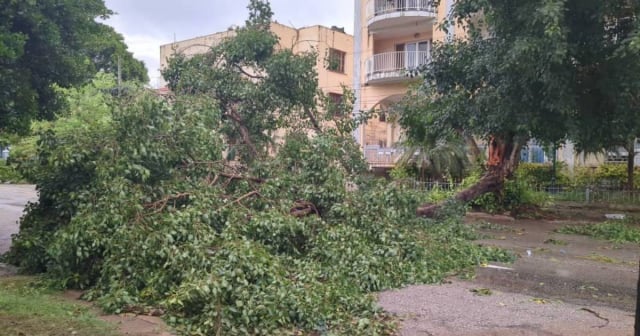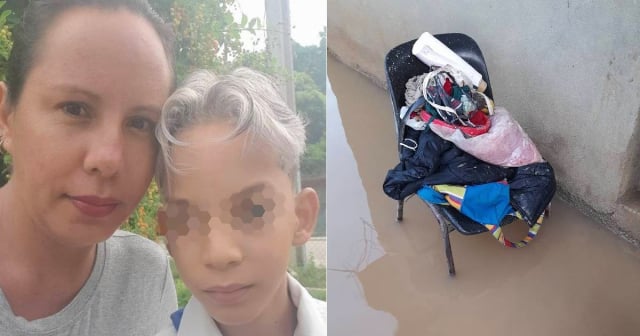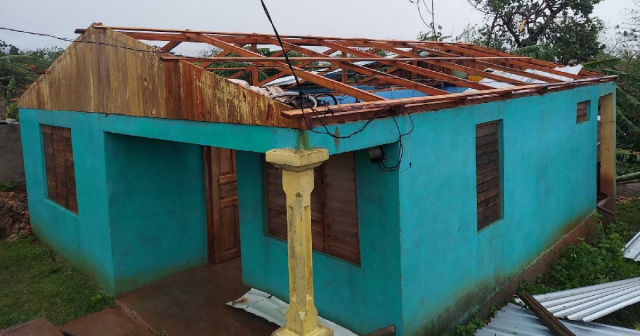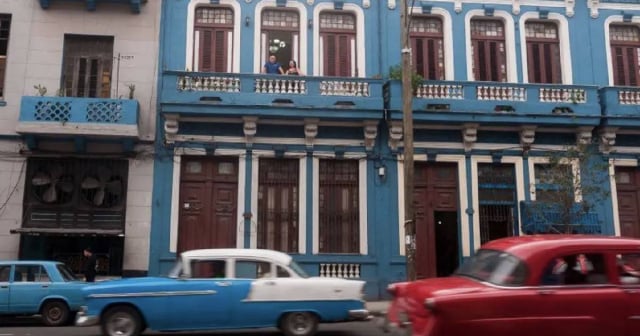Residents of places like Alquízar, Güira de Melena, and other areas of Artemisa have shared on social media the moments of panic and the extent of the damage, demonstrating how Hurricane Rafael has jeopardized their homes and safety.
The videos show how easily strong winds tear off zinc and fiber cement sheets, which dangerously fly over the buildings. In shock, residents film the scenes while seeking refuge inside their homes, fearing that one of these sheets might hit their houses or themselves.
In Cuba, a country frequently affected by hurricanes and cyclones, the roofs of homes present a constant challenge for the government. The situation worsens each year due to issues with the delivery and replenishment of construction materials, such as tiles, which are essential for repairing the damage caused by these events. The scarcity of resources and logistical difficulties in the distribution of construction materials often delay repair work, leaving many families vulnerable to further damage.
This issue has been addressed several times by the state-run press. In 2018, in an opinion piece in the newspaper Granma, an interviewed engineer and researcher explained that the use of zinc roofing does not have to be synonymous with vulnerability. However, the reality is quite different.
"Many people believe that zinc roofs are vulnerable and that they will always be blown away during a hurricane, but that is not the case. A house with a zinc or fiber-cement roof, like those we build in Cuba, is viable and resilient when equipped with the proper anchoring and fastening elements and installed correctly," stated the expert Dr. Candebat Sánchez.
The truth is that as Hurricane Rafael continues its path through western Cuba, the situation in Artemisa reveals the urgent need for more resilient building materials and better preparedness to face the impacts of weather events on the island, which has barely begun to recover from Hurricane Oscar's passage through eastern Cuba on October 20.
Oscar left a significant trail of destruction in the province of Guantánamo, with over 11,000 homes affected, according to official figures. During a meeting in Baracoa, the Provincial Defense Council reported that there were 257 total collapses, 360 partial ones, and 9,198 homes lost part of their roofs. In addition to the damage to homes, there were also impacts on state facilities and road infrastructure, further complicating recovery efforts in the area.
To support the families affected, the authorities have set up tents in the municipality of Baracoa, one of the hardest-hit areas. This temporary shelter, donated by the World Food Programme (WFP), is being established in regions with limited infrastructure, and local social workers have assisted in its setup. However, this measure reflects the Cuban government's limitations in providing permanent and sustainable solutions for those who have lost everything.
In addition to local efforts, several international organizations have contributed humanitarian aid. Among them, the WFP has sent 200 tunnel tents for those who have become homeless, along with supplies for the Cuban Defense Council and government. Humanitarian assistance has become a temporary relief for many families who continue to face uncertainty and the challenges of long-term recovery amid limited resources and adverse weather conditions in Guantánamo.
What do you think?
COMMENTArchived in:






